Prime Minister of Croatia
| President of the Government of Croatia
Predsjednik Vlade Hrvatske | |
|---|---|
| Style | His Excellency[1] |
| Appointer | President of the Republic |
| Inaugural holder | Stjepan Mesić |
| Formation | 30 May 1990 |
| Website | www.vlada.hr |
The Prime Minister of Croatia (Croatian: Premijer Hrvatske), officially the President of the Government of the Republic of Croatia (Croatian: Predsjednik Vlade Republike Hrvatske), is Croatia's head of government, and is the de facto most powerful and influential state officeholder in the Croatian system of government. Following the first-time establishment of the office in 1945, the 1990-2001 semi-presidential period is the only exception where the President of Croatia held de facto authority. In the formal Croatian order of precedence, however, the position of prime minister is the third highest state office, after the President of the Republic and the Speaker of the Parliament.
The Constitution of Croatia prescribes that the Parliament "supervises" the Government (Article 81) and that the President of the Republic "ensures the regular and balanced functioning and stability of government" (as a whole; Article 94), while the Government is introduced in Article 108.[2] Since 2000, the prime minister has had various added constitutional powers and is mentioned before the Government itself in the text of the Constitution, in Articles 87, 97, 99, 100, 101, 103, 104.[2] The current Prime Minister of Croatia is Andrej Plenković. The Government of Croatia meets in Banski dvori, a historical building located on the west side of St. Mark's Square in Zagreb.
Name
The official name of the office, literally translated, is "President of the Government" (Predsjednik Vlade), rather than "Prime Minister" (Prvi Ministar). When the office was first established in 1945, the name "President of the Government" was introduced. The name of the office was changed 8 years later with the Yugoslav constitutional reforms of 1953, into "President of the Executive Council" (Predsjednik Izvršnog vijeća). After another round of constitutional reforms in 1990, the office was renamed back to its original 1945-1953 title of "President of the Government". For all periods, however, the term "Prime Minister" is colloquially used (especially in the media) in English-language usage.
History
The first Prime Minister of Croatia was Vladimir Bakarić, who assumed the position on 14 April 1945. The position was then, as it is today, the most powerful public office in the state (the only exception in that regard is the 1990-2000 semi-presidential period, during which the President was the most significant figure). In post-World War II Croatia, which was at the time a constituent republic of Yugoslavia, a single-party system was in place. During this time there were twelve heads of government, all from the ranks of the Communist Party of Yugoslavia (KPJ), which was reformed and renamed into the League of Communists of Yugoslavia (SKJ) in 1952. The federal party was organized into six sub-organizations - the republic parties, one for each of the six federal republics. Croatian politicians and prime ministers of the period were members of the League of Communists of Yugoslavia through their membership in the League of Communists of Croatia (SKH), the Croatian part of the federal party (as was respectively the case with all Yugoslav politicians). The office remained the central post of Croatian politics in spite of the institution of a collective Presidency in 1974 (previously the mostly-nominal function of the head of state belonged to the Speaker of the Croatian Parliament, the Sabor).
After the constitutional amendments that allowed for multi-party elections in Croatia, the Parliament enacted amendments to the constitution (25 July) which eliminated socialist references and adopted new national symbols. The newly elected tricameral Parliament proceeded to change the Constitution of Croatia, and on 22 December 1990, this so-called "Christmas Constitution" fundamentally defined the Republic of Croatia and its governmental structure. Since the 1990 constitution Croatia was a semi-presidential republic, which meant the President of Croatia had broad executive powers, including naming the Prime Minister and dissolving the government. During this period, lasting until 2000/2001, Croatia had nine prime ministers. The first Prime Minister of Croatia since the 1990 constitutional reforms was Stjepan Mesić, assuming office on 30 May 1990.[3][4]
Croatia proclaimed independence from Yugoslavia on 25 June 1991 following the May 1991 independence referendum. However, the country then signed the July 1991 Brijuni Agreement in which it agreed to postpone the formal declaration of independence for three months. Meanwhile, the Croatian War of Independence ensued, and Franjo Gregurić was appointed to lead a Government of National Unity. In October the same year, Croatia formally declared independence, with Gregurić continuing on as the first prime minister of Croatia after the secession from Yugoslavia.
Following the January 2000 general election the winning centre-left coalition led by the Social Democratic Party amended the Constitution and effectively stripped the President of most of his executive powers, strengthening the role of the Parliament and the Prime Minister, turning Croatia into a parliamentary republic. The Prime Minister again (as before 1990) became the foremost post in Croatian politics.
To date there have been eleven Prime Ministers who have chaired 13 governments since the first multi-party elections. Eight Prime Ministers were members of the Croatian Democratic Union during their terms of office, two were members of the Social Democratic Party and one was not a member of any political party. Since independence there has been one female Prime Minister (Jadranka Kosor), while Savka Dabčević-Kučar was the first woman to hold an office equivalent to a head of government as Chairman of the Executive Council of the Socialist Republic of Croatia (1967-1969).
List of officeholders (1945–present)
League of Communists of Yugoslavia League of Communists of Croatia Croatian Democratic Union Social Democratic Party of Croatia Independent
Presidents of the Executive Council of the Socialist Republic of Croatia (1945–1990)
| No. | Name (Born–Died) |
Portrait | Term of Office | Political party | Election | Cabinet | Cabinet parties | ||
|---|---|---|---|---|---|---|---|---|---|
| Took Office | Left Office | Duration | |||||||
| N/A | Pavle Gregorić (1892–1989) |
 |
7 March 1945 | 14 April 1945 | 39 days | Communist Party of Yugoslavia | — | Gregorić | KPH |
| 1 | Vladimir Bakarić (1912–1983) |
.jpg) |
14 April 1945 | 18 December 1953 | 8 years, 7 months, 18 days | Communist Party of Yugoslavia (party renamed in 1952) League of Communists of Yugoslavia (party renamed in 1952) |
— | Bakarić 1st Executive Council |
KPH |
| President of the Government of the People's Republic of Croatia from 1945 to 1953. On 6 February 1953 he was elected to the new position of President of the Executive Council. Simultaneously held these positions along with the post of Secretary of the Central Committee of the League of Communists of Croatia. Subsequently became President of the Parliament of the People's Republic of Croatia (1953–1963). | |||||||||
| 2 | Jakov Blažević (1912–1996) |
 |
18 December 1953 | 10 July 1962 | 8 years, 7 months | League of Communists of Yugoslavia | — | 2nd Executive Council 3rd Executive Council |
SKH |
| Resigned as President of the Executive Council to take the post of president of the Chamber of Commerce of Yugoslavia.[5] He was replaced by Zvonko Brkić for the remainder of the term of the 3rd Executive Council. | |||||||||
| 3 | Zvonko Brkić (1912–1977) |
 |
10 July 1962 | June 1963 | 11 months | League of Communists of Yugoslavia | — | 3rd Executive Council | SKH |
| Member of the Executive Council from 1953 to 1963. After Jakov Blažević's resignation as President of the Executive Council he served the remainder of his term. He subsequently became Vice President of the Federal Assembly (1963–1967). | |||||||||
| 4 | Mika Špiljak (1916–2007) |
 |
June 1963 | 11 May 1967 | 3 years, 11 months | League of Communists of Yugoslavia | — | 4th Executive Council | SKH |
| Became President of the Federal Executive Council on 16 May 1967. | |||||||||
| 5 | Savka Dabčević-Kučar (1923–2009) |
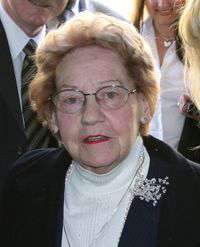 |
11 May 1967 | 8 May 1969 | 2 years | League of Communists of Yugoslavia | — | 5th Executive Council | SKH |
| After her term expired she was immediately appointed Secretary of the Central Committee of the League of Communists of Croatia (1969–1971). | |||||||||
| 6 | Dragutin Haramija (1923–2012) |
 |
May 1969 | 28 December 1971 | 2 years, 7 months | League of Communists of Yugoslavia | — | 6th Executive Council | SKH |
| Denounced at the XXI. Meeting of the Presidency of the Central Committee of the League of Communists of Yugoslavia held in Karađorđevo on 1 and 2 December 1971 and forced to resign. Subsequently withdrew from politics. | |||||||||
| 7 | Ivo Perišin (1925–2008) |
 |
28 December 1971 | 8 May 1974[6] | 2 years, 4 months | League of Communists of Yugoslavia | — | 7th Executive Council | SKH |
| Subsequently served as President of the Parliament of the Socialist Republic of Croatia (1974–1978). | |||||||||
| 8 | Jakov Sirotković (1922–2002) |
 |
8 May 1974 | 9 May 1978 | 4 years, 1 month | League of Communists of Yugoslavia | — | 8th Executive Council | SKH |
| 9 | Petar Fleković (1932–) |
 |
9 May 1978 | May 1982 | 4 years | League of Communists of Yugoslavia | — | 9th Executive Council | SKH |
| Subsequently named director of INA (1982–1990). | |||||||||
| 10 | Ante Marković (1924–2011) |
 |
May 1982 | 10 May 1986 | 4 years | League of Communists of Yugoslavia | — | 10th Executive Council | SKH |
| Elected by Parliament as President of the Presidency of SR Croatia on 10 May 1986. | |||||||||
| 11 | Antun Milović (1934–2008) |
 |
10 May 1986 | 30 May 1990 | 4 years, 21 days | League of Communists of Yugoslavia (until January 1990) League of Communists of Croatia (from January 1990) |
— | 11th Executive Council | SKH |
Prime Ministers of the Republic of Croatia (1990–present)
While Stjepan Mesić formally held the post of President of the Executive Council, not of Prime Minister of the Republic of Croatia, during his term in office, he is today considered to have been the first Prime Minister of an independent Croatia as the head of the first Croatian government cabinet (in fact the 12th Executive Council of SR Croatia). Likewise Josip Manolić held the title of Prime Minister during his term, though Croatia was still within the Yugoslav federation at the time and did not formally become independent until 8 October 1991, during the term of Franjo Gregurić. Thus, it is as of 2016 considered that there have been 12 Prime Ministers of the Republic of Croatia to date and that the office of Prime Minister is not a direct continuation of the post of President of the Executive Council of the Socialist Republic of Croatia, which was formally a constituent republic of the Socialist Federal Republic of Yugoslavia, and was thus not an independent nation. Therefore, the Presidents of the republic's Executive Council, though formally being heads of government, held a sub-national office similar to modern-day First Ministers in Scotland, Wales and Northern Ireland or Minister-presidents in German states, and were subordinate to the Federal Executive Council in Belgrade.
| No. | Name (Born–Died) |
Portrait | Term of Office | Political party | Election | Cabinet | Cabinet parties | Assembly - Confidence | ||
|---|---|---|---|---|---|---|---|---|---|---|
| Designated Took Office Confidence |
Resignation Left Office |
Duration | ||||||||
| 1 |
Stjepan Mesić (1934–) |
 |
30 May 1990 | 24 August 1990 | 86 days | Croatian Democratic Union | 1990 | Mesić | HDZ | 1st Assembly |
| 2 |
Josip Manolić (1920–) |
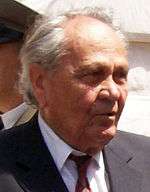 |
24 August 1990[a] | 17 July 1991 | 327 days | Croatian Democratic Union | — | Manolić | HDZ | 1st Assembly |
| 3 |
Franjo Gregurić (1939–) |
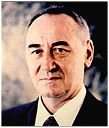 |
17 July 1991[a] | 12 August 1992 | 392 days | Croatian Democratic Union | — | Gregurić | HDZ-SDP-SDSH -HSLS-HKDS (National unity government) |
1st Assembly |
| 4 |
Hrvoje Šarinić (1935–) |
 |
12 August 1992[a] 8 September 1992 |
3 April 1993 | 234 days | Croatian Democratic Union | 1992 | Šarinić | HDZ | 2nd Assembly |
| 5 |
Nikica Valentić (1950–) |
 |
29 March 1993 3 April 1993[a] |
7 November 1995 | 948 days | Croatian Democratic Union | — | Valentić | HDZ | 2nd Assembly |
| 6 |
Zlatko Mateša (1949–) |
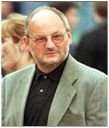 |
4 November 1995 7 November 1995[a] |
27 January 2000 | 1542 days | Croatian Democratic Union | 1995 | Mateša | HDZ | 3rd Assembly |
| 7 |
Ivica Račan (1944–2007) |
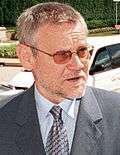 |
22 January 2000 27 January 2000[a] 2 February 2000 |
5 July 2002 (Resigned) 30 July 2002 |
1426 days | Social Democratic Party | 2000[7] | Račan I | SDP-HSLS-HNS -HSS-IDS-LS |
4th Assembly - 100/151 MPs (Račan I) - 84/151 MPs (Račan II) |
| 11 June 2002 30 July 2002 |
23 December 2003 | Račan II | SDP-HNS-HSS -LS-Libra | |||||||
| 8 |
Ivo Sanader (1953–) |
 |
9 December 2003 23 December 2003 |
12 January 2008 | 2022 days | Croatian Democratic Union | 2003 | Sanader I | HDZ | 5th Assembly - 88/151 MPs (Sanader I) 6th Assembly - 82/153 MPs (Sanader II) |
| 15 December 2007 12 January 2008 |
1 July 2009 (Resigned) 6 July 2009 |
2007 | Sanader II | HDZ-HSLS-HSS -SDSS | ||||||
| 9 |
Jadranka Kosor (1953–) |
 |
3 July 2009 6 July 2009 |
23 December 2011 | 900 days | Croatian Democratic Union | — | Kosor | HDZ-HSLS-HSS -SDSS |
6th Assembly - 83/153 MPs |
| 10 |
Zoran Milanović (1966–) |
 |
14 December 2011 23 December 2011 |
22 January 2016 | 1491 days | Social Democratic Party | 2011 | Milanović | SDP-HNS -IDS |
7th Assembly - 89/151 MPs |
| 11 |
Tihomir Orešković (1966–) |
 |
23 December 2015 22 January 2016 |
16 June 2016 (No confidence) 19 October 2016 |
271 days | Independent | 2015 | Orešković | Patriotic Coalition-MOST | 8th Assembly - 83/151 MPs |
| 12 |
Andrej Plenković (1970–) |
.jpg) |
10 October 2016 19 October 2016 |
Incumbent | 47 days | Croatian Democratic Union | 2016 | Plenković | HDZ-MOST | 9th Assembly - 91/151 MPs |
Statistics
| # | Prime Minister | Date of birth | Age at ascension (first term) |
Time in office (total) |
Age at retirement (last term) |
Date of death | Longevity |
|---|---|---|---|---|---|---|---|
| 1 | Stjepan Mesić | December 24, 1934 | 55 years, 157 days | 0 years, 86 days | 55 years, 243 days | Living | 81 years, 347 days (Living) |
| 2 | Josip Manolić | March 22, 1920 | 70 years, 155 days | 0 years, 327 days | 71 years, 117 days | Living | 96 years, 258 days (Living) |
| 3 | Franjo Gregurić | October 12, 1939 | 51 years, 278 days | 1 year, 26 days | 52 years, 305 days | Living | 77 years, 54 days (Living) |
| 4 | Hrvoje Šarinić | February 17, 1935 | 57 years, 177 days | 0 years, 234 days | 58 years, 45 days | Living | 81 years, 292 days (Living) |
| 5 | Nikica Valentić | November 24, 1950 | 42 years, 130 days | 2 years, 218 days | 44 years, 348 days | Living | 66 years, 11 days (Living) |
| 6 | Zlatko Mateša | June 17, 1949 | 46 years, 143 days | 4 years, 81 days | 50 years, 224 days | Living | 67 years, 171 days (Living) |
| 7 | Ivica Račan | February 24, 1944 | 55 years, 337 days | 3 years, 330 days | 59 years, 302 days | April 29, 2007 | 63 years, 64 days |
| 8 | Ivo Sanader | June 8, 1953 | 50 years, 198 days | 5 years, 195 days | 56 years, 28 days | Living | 63 years, 180 days (Living) |
| 9 | Jadranka Kosor | July 1, 1953 | 56 years, 5 days | 2 years, 170 days | 58 years, 175 days | Living | 63 years, 157 days (Living) |
| 10 | Zoran Milanović | October 30, 1966 | 45 years, 54 days | 4 years, 30 days | 49 years, 84 days | Living | 50 years, 36 days (Living) |
| 11 | Tihomir Orešković | January 1, 1966 | 50 years, 21 days | 0 years, 271 days | 50 years, 292 days | Living | 50 years, 339 days (Living) |
| 12 | Andrej Plenković | April 8, 1970 | 46 years, 195 days | 47 days (Ongoing) | Incumbent | Living | 46 years, 241 days (Living) |
Spouses of Prime Ministers
| Name | Relation to Prime Minister |
|---|---|
| Milka Mesić (née Dudundić) | wife of Prime Minister Stjepan Mesić |
| Marija Eker Manolić | wife of Prime Minister Josip Manolić |
| Jozefina Gregurić (née Abramović) | wife of Prime Minister Franjo Gregurić |
| Erika Šarinić | wife of Prime Minister Hrvoje Šarinić |
| Antonela Valentić | wife of Prime Minister Nikica Valentić |
| Sanja Gregurić-Mateša | wife of Prime Minister Zlatko Mateša |
| Dijana Pleština | wife of Prime Minister Ivica Račan |
| Mirjana Sanader (née Šarić) | wife of Prime Minister Ivo Sanader |
| Jadranka Kosor divorced before becoming Prime Minister | |
| Sanja Musić Milanović | wife of Prime Minister Zoran Milanović |
| Sanja Dujmović Orešković | wife of Prime Minister Tihomir Orešković |
| Ana Maslać Plenković | wife of Prime Minister Andrej Plenković |
Living former Heads of government of Croatia
There are eleven living former Heads of government:
-

Petar Fleković
(1978–1982)
September 14, 1932 -

Stjepan Mesić
(1990)
December 24, 1934 -

Josip Manolić
(1990–1991)
March 22, 1920 -

Franjo Gregurić
(1991–1992)
October 12, 1939 -

Hrvoje Šarinić
(1992–1993)
February 17, 1935 -

Nikica Valentić
(1993–1995)
November 24, 1950 -

Zlatko Mateša
(1995–2000)
June 17, 1949 -

Ivo Sanader
(2003–2009)
June 8, 1953 -

Jadranka Kosor
(2009–2011)
July 1, 1953 -

Zoran Milanović
(2011–2016)
October 30, 1966 -

Tihomir Orešković
(2016)
January 1, 1966
See also
- List of Croatian Governments
- President of Croatia
- Speaker of the Croatian Parliament
- Secretary of the League of Communists of Croatia
- Politics of Croatia
- List of heads of state of Yugoslavia
- Prime Minister of Yugoslavia
Notes
^a From 1990 until the constitutional changes in November 2000 (which replaced a powerful semi-presidential system with an incomplete parliamentary system), the term of the Prime Minister began when he was appointed by the President of the Republic, and not from the point when he received a vote of confidence in Parliament.
References
- ↑ , Protocol and Liaison Service, United Nations.
- 1 2 "The Constitution of the Republic of Croatia (consolidated text)". Croatian Parliament. Retrieved 2011-02-16.
- ↑ "Chronology of Croatian governments" (in Croatian). Croatian Information-Documentation Referral Agency. Retrieved 2011-05-13.
- ↑ "Prethodne Vlade RH" [Former Governments of the Republic of Croatia] (in Croatian). Croatian Government. Retrieved 2010-12-13.
- ↑ Bukvić, Nenad (2012). "Izvršno vijeće Sabora Narodne Republike Hrvatske : ustroj i djelovanje (1953–1963)". Arhivski vjesnik (in Croatian). 55: 9–46.
- ↑ Bukvić, Nenad (2013). "Izvršno vijeće Sabora Socijalističke Republike Hrvatske: ustroj i djelovanje (1963–1974)". Arhivski vjesnik (in Croatian). 56: 50.
- ↑ After the changes to the Constitution of the Republic of Croatia the country moved from a semi-presidential system to a parliamentary system, making the Prime Minister the most powerful office in the country.
.jpg)
